Pasifika Renaissance endeavors to preserve and promote cultural and historical heritage in the Pacific Islands in order to contribute to islanders’ efforts toward the revitalization (“renaissance”) of their traditional cultures and empower local communities. We believe that learning one’s own culture and history generates and enhances respect for one’s origin and identity. It further creates a strong culture for the present and future, built on the foundation of these traditions. Since the NGO’s establishment, our activities have been mainly focused on the Federated States of Micronesia (FSM) and dissemination of information through the internet, targeting Pacific islanders. We are planning to expand our work to other areas to spread the “renaissance” movement.

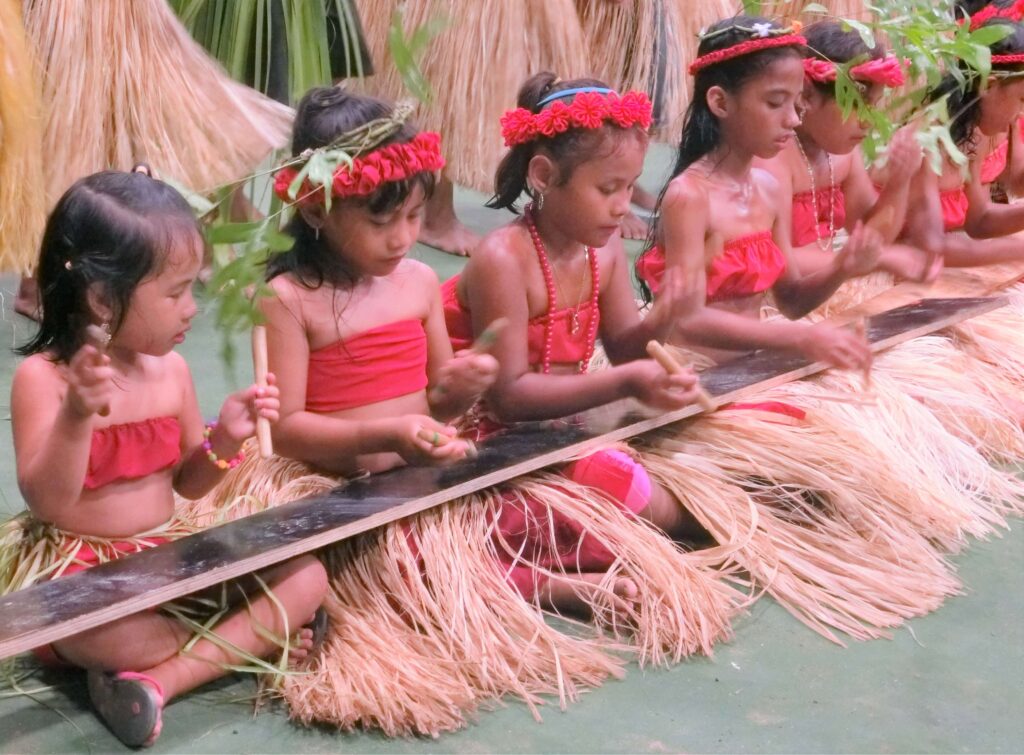
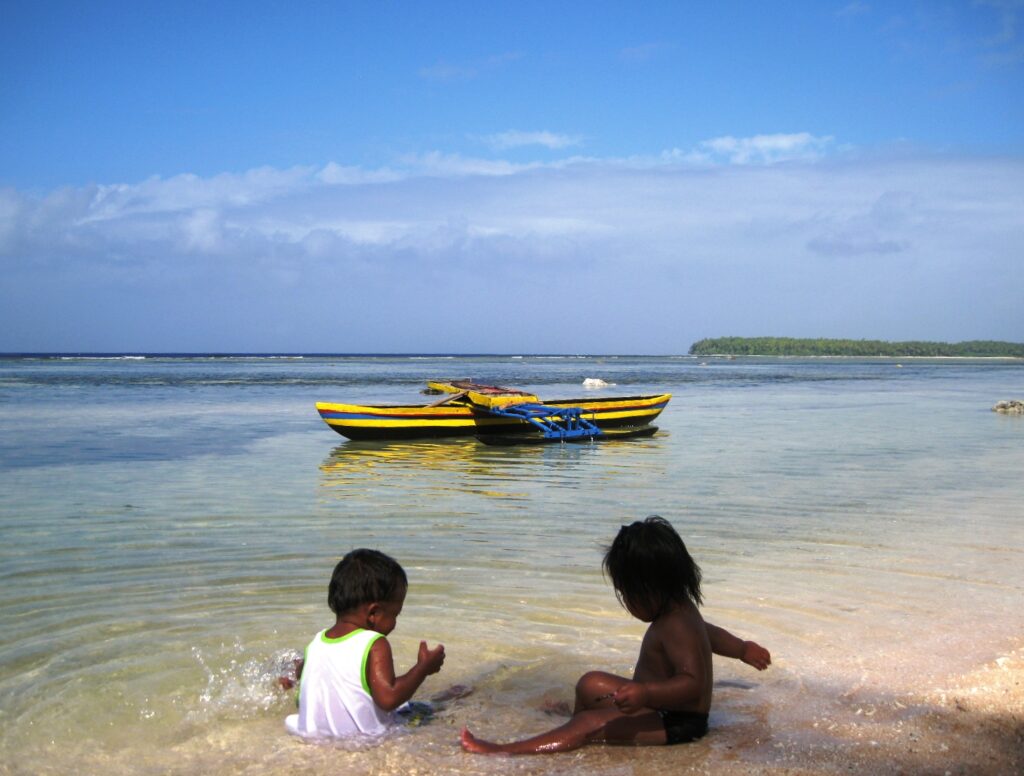
1. Documentation, research, and educational projects regarding traditional cultures, histories, and cultural heritage in Oceania
Documentation and educational use of oral traditions.
We record disappearing stories from island elders by a video camera in Micronesia and share those videos on our YouTube channel to pass those stories down to the younger generation. Those videos are available for use in traditional culture education in classrooms.
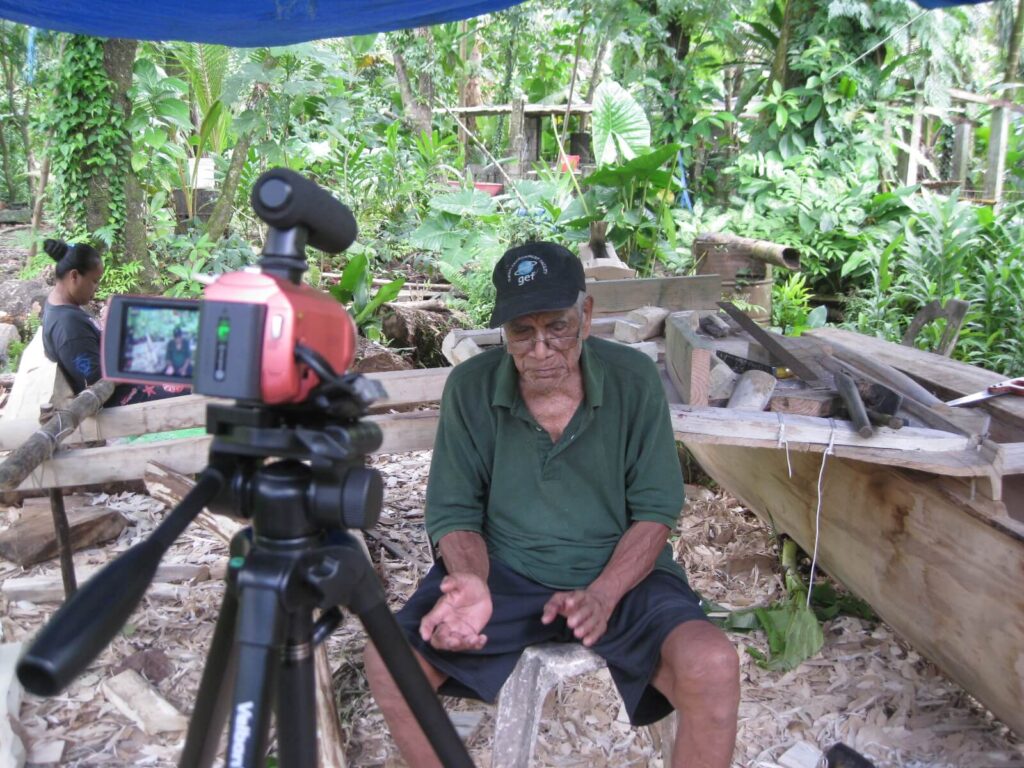
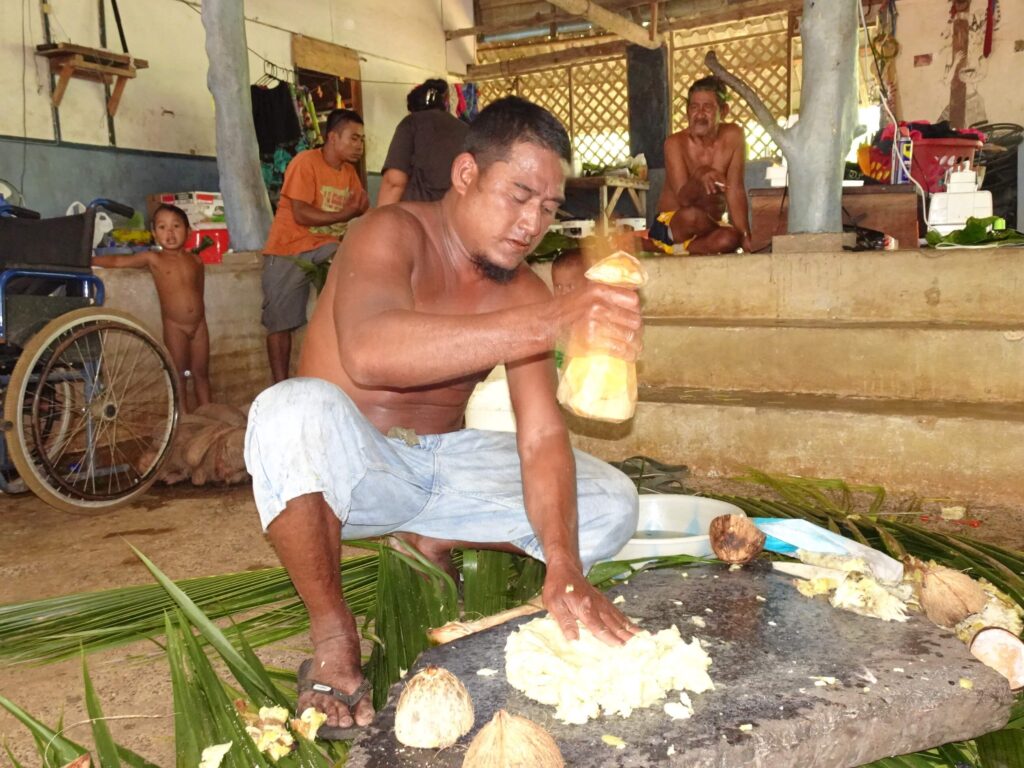
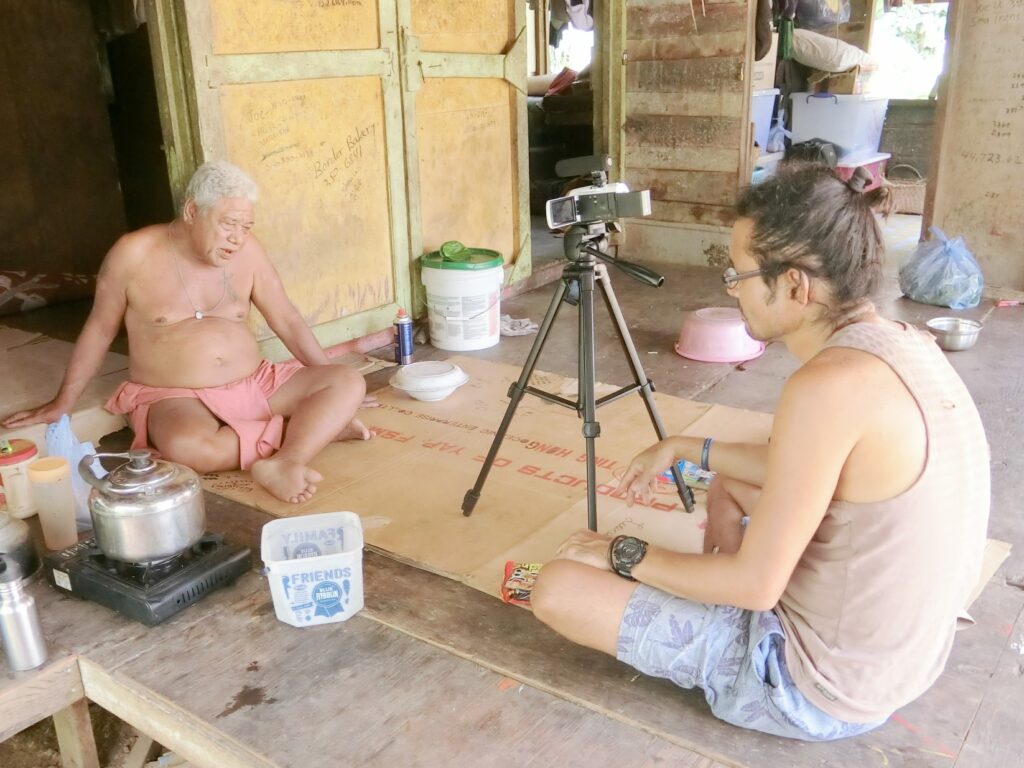
Sharing historical and academic materials with local communities.
Historical and research materials collected by foreign explorers, missionaries, colonial administrators, settlers, and researchers in the past are generally held at overseas institutions, making it difficult for Pacific islanders to access such information. We endeavor to repatriate, digitize, and link those materials to make them available to local communities.
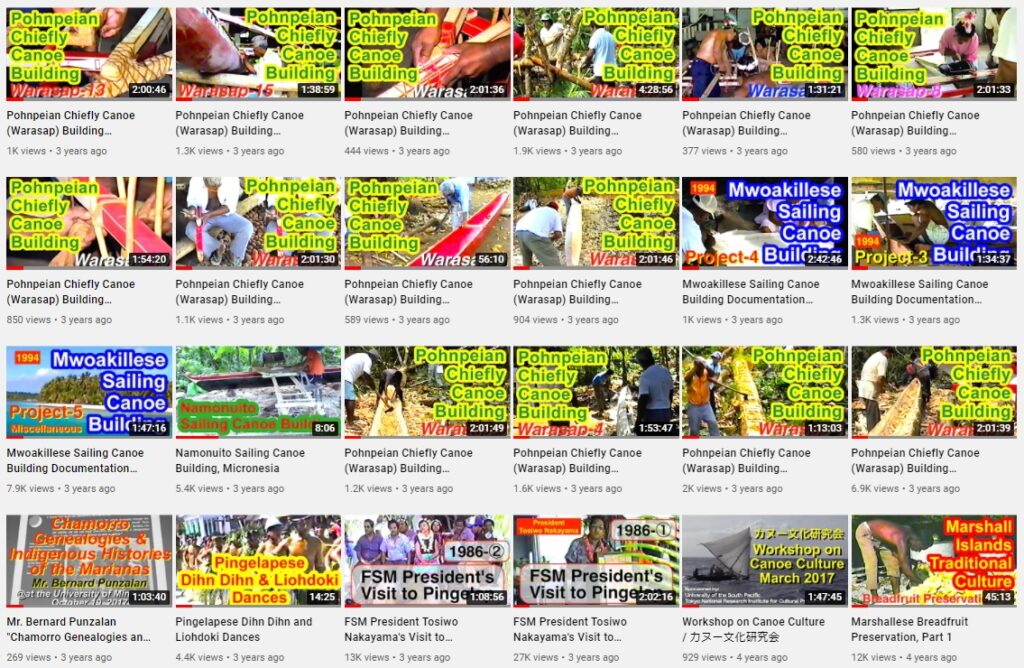
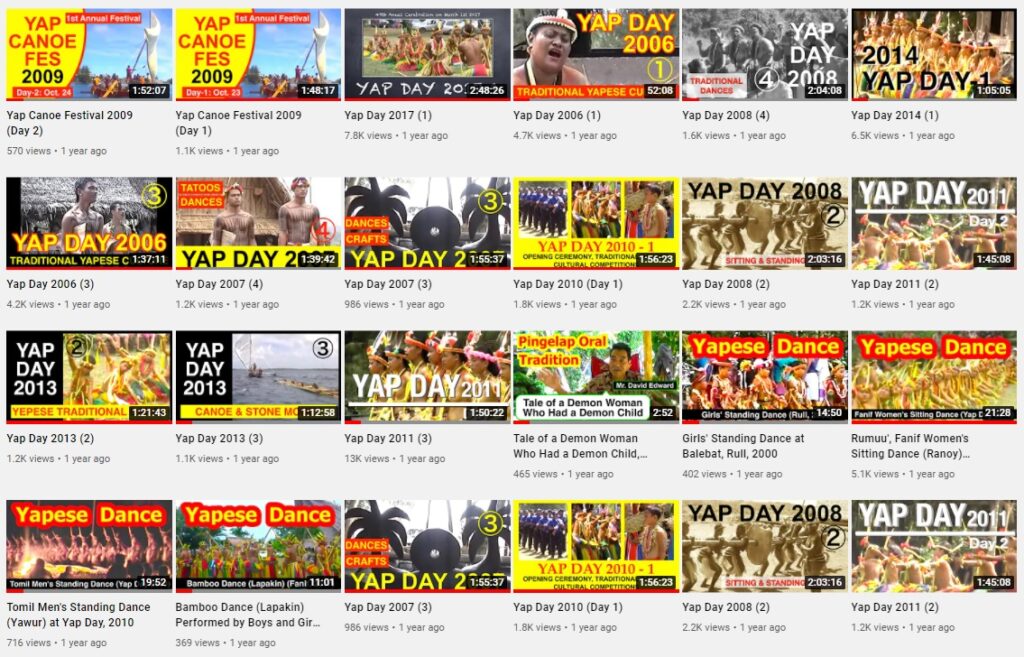
Creation of social studies materials.
We assist local education departments in producing social studies materials on culture and history to enable children to learn them at schools.
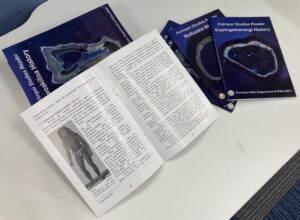
School visits.
We do school visits to talk to local students about the history and the importance of cultural heritage.
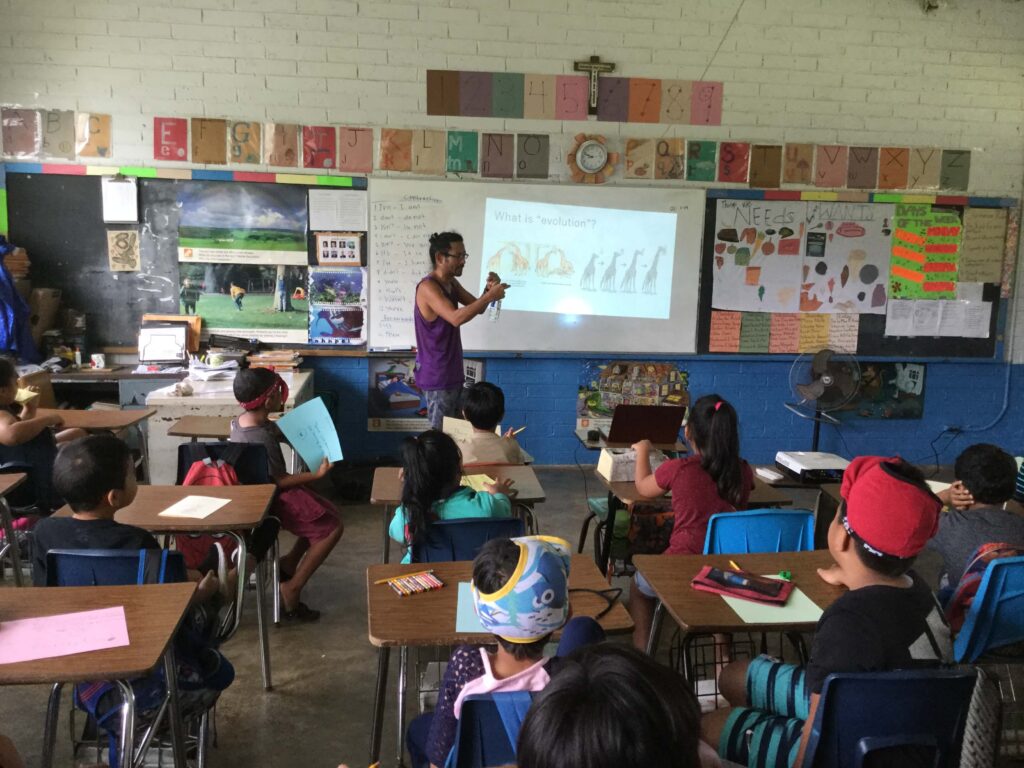
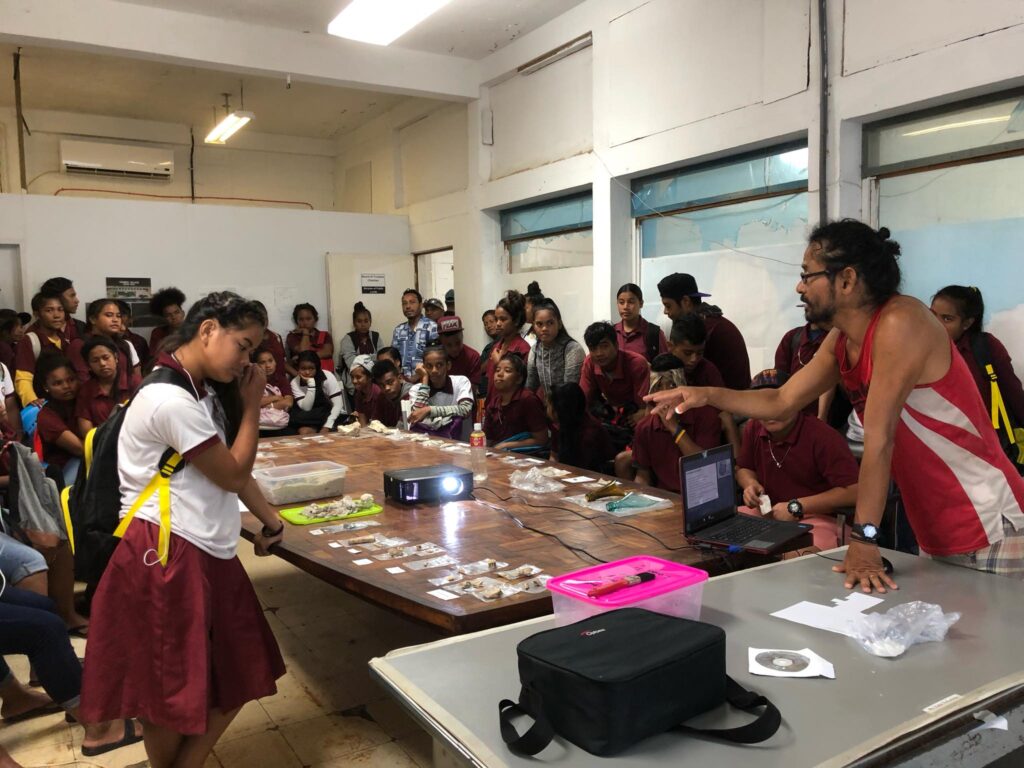

Educational programs through our Facebook page and YouTube channel.
We regularly share historical and cultural information on our Facebook page![]() and various videos on our YouTube channel
and various videos on our YouTube channel![]() , and organize a platform, Facebook group “Pasifika Renaissance”
, and organize a platform, Facebook group “Pasifika Renaissance”![]() .
.
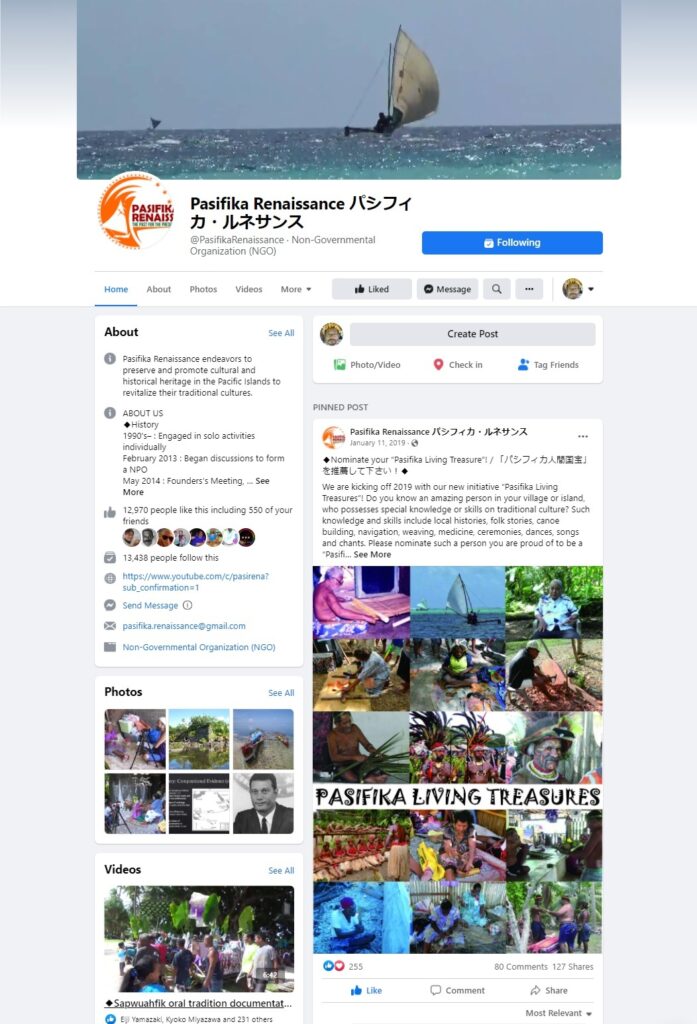
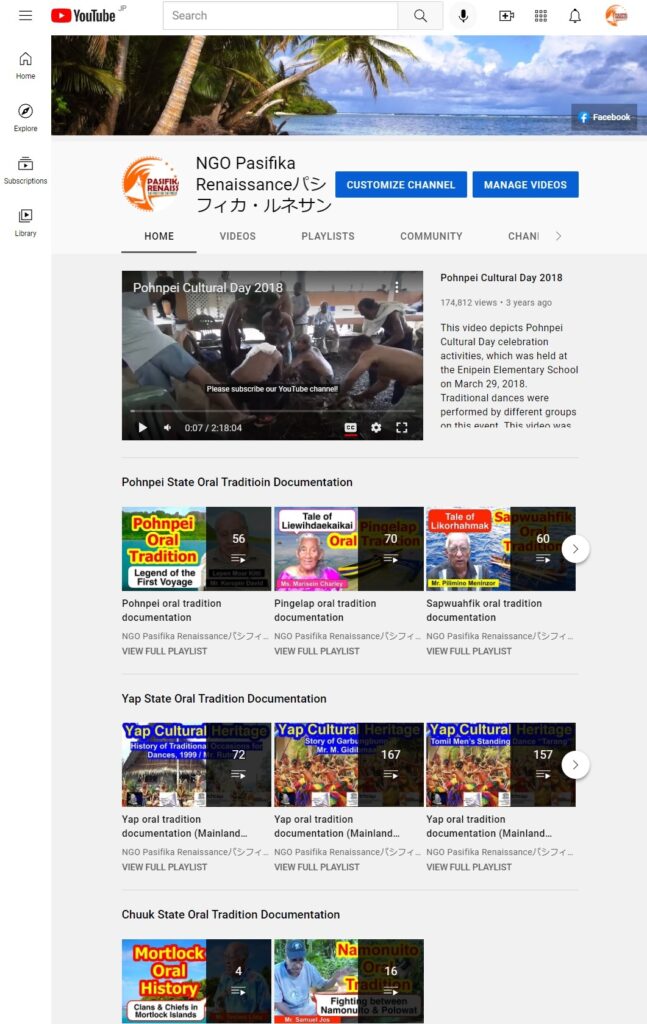
These activities contribute to United Nations’ Sustainable Development Goals (SDGs) Objective 4 “Quality Education,” particularly Target 4.7 “education for … appreciation of cultural diversity and of culture’s contribution to sustainable development.”
2. Technical assistance to relevant agencies and organizations in Oceania
Assistance to local governments’ efforts in preservation and utilization of historical heritage
Local government staff, who oversee cultural heritage administration, tend to lack professional education on the topic. We assist their World Heritage nominations and historical park developments by providing them with advice, guidance, and capacity-building training.



Assistance to local governments and relevant groups’ efforts in documentation and education of intangible cultural heritage
Since local governments’ efforts in documentation and succession of traditional culture are not sufficient, we provide them with technical assistance by recording oral traditions and producing radio programs collaboratively.

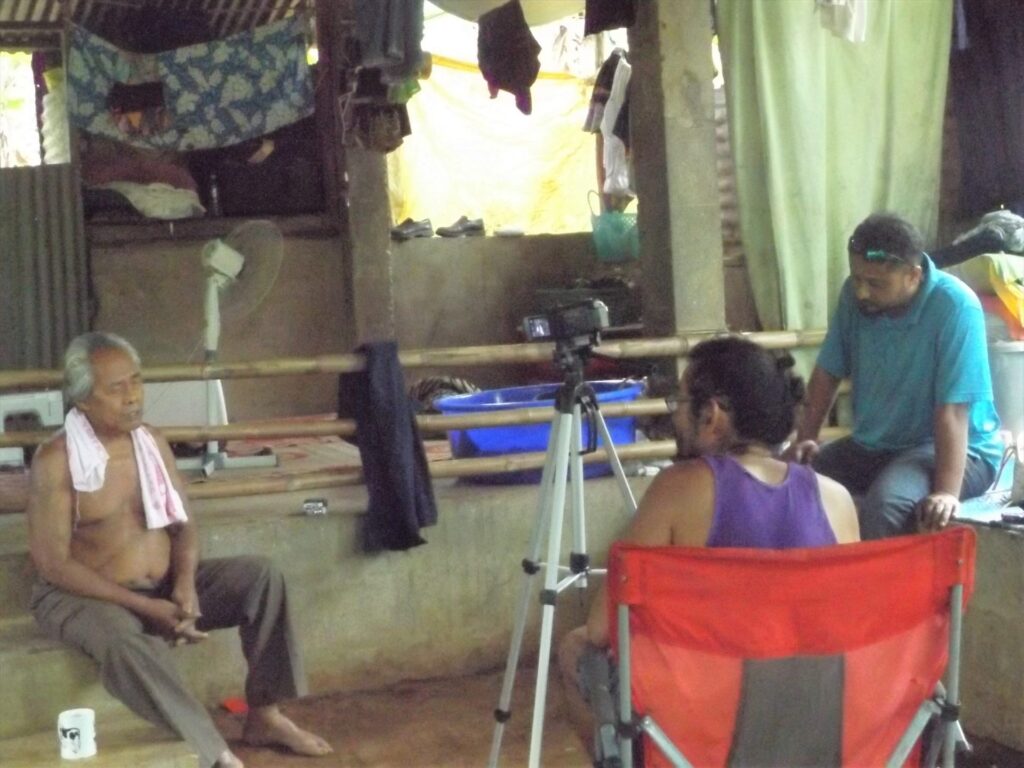
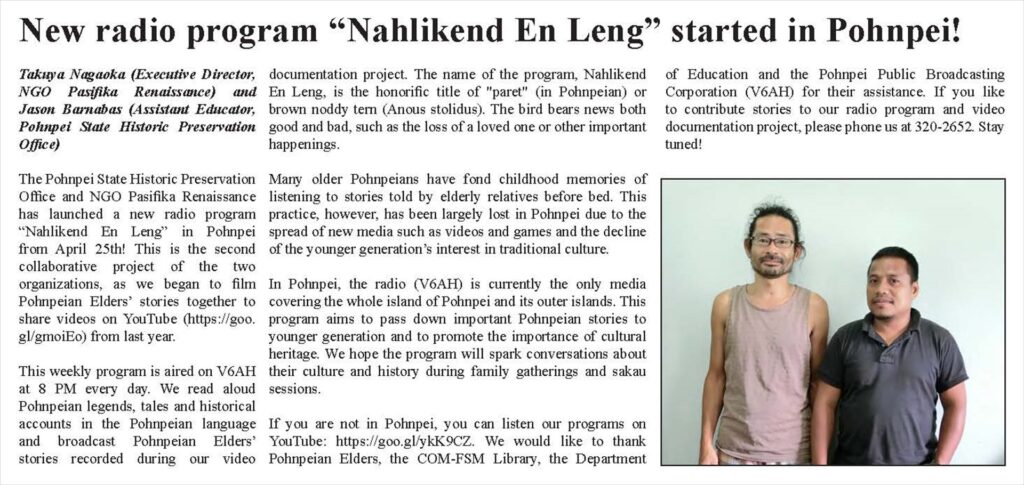
These activities contribute to United Nations’ Sustainable Development Goals (SDGs) Objective 11 “Sustainable Cities and Communities,” particularly Target 11.4 “Strengthen efforts to protect and safeguard the world’s cultural and natural heritage.”
3. Promotion of tourism, and interactions and friendship with Japan in Oceania
Promotion of cultural and heritage tourism
To contribute to the economies in the Pacific Island countries, we promote preserving the tangible and intangible cultural heritage that can be invaluable tourism resources and utilizing this for “cultural tourism.”
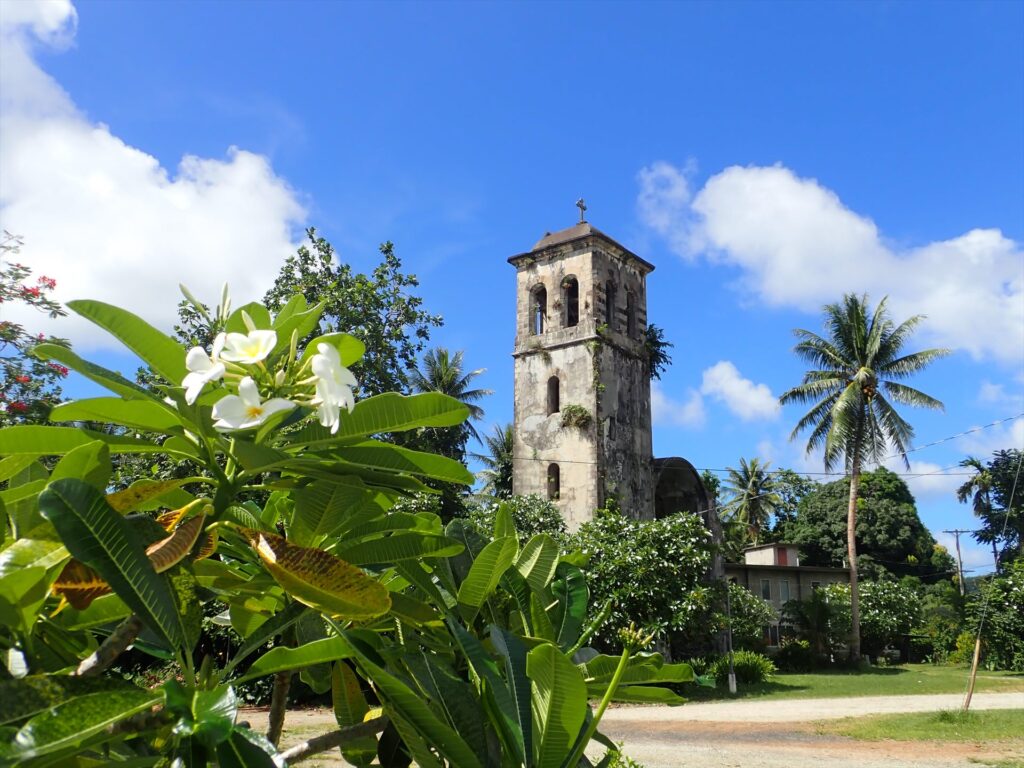
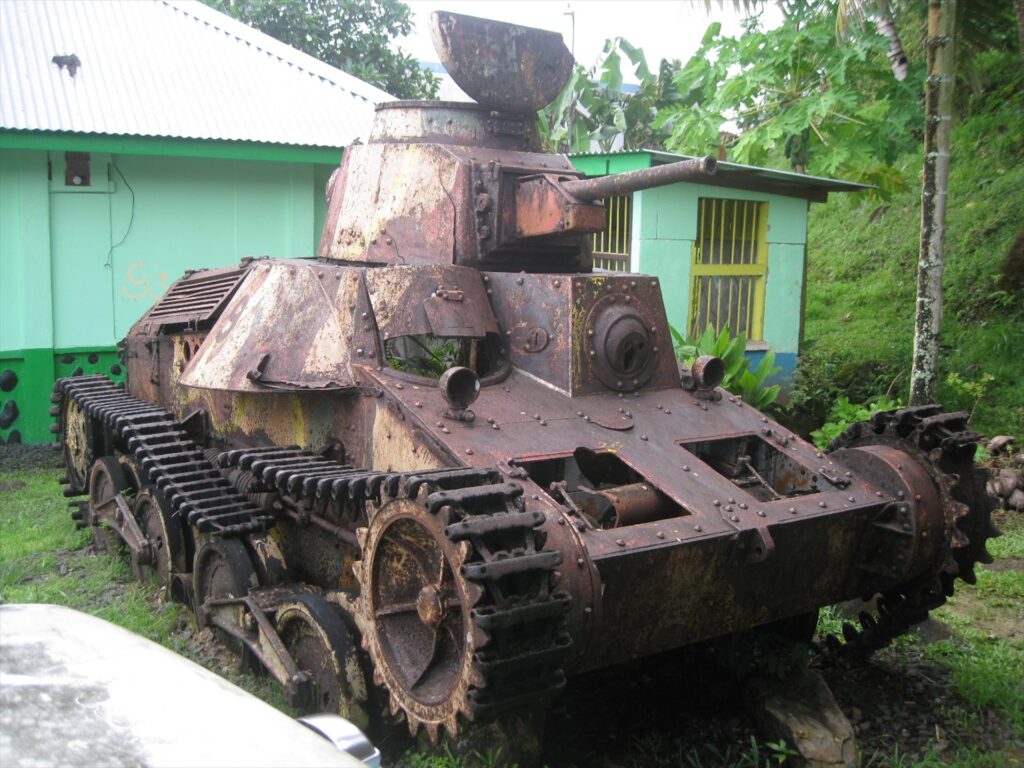
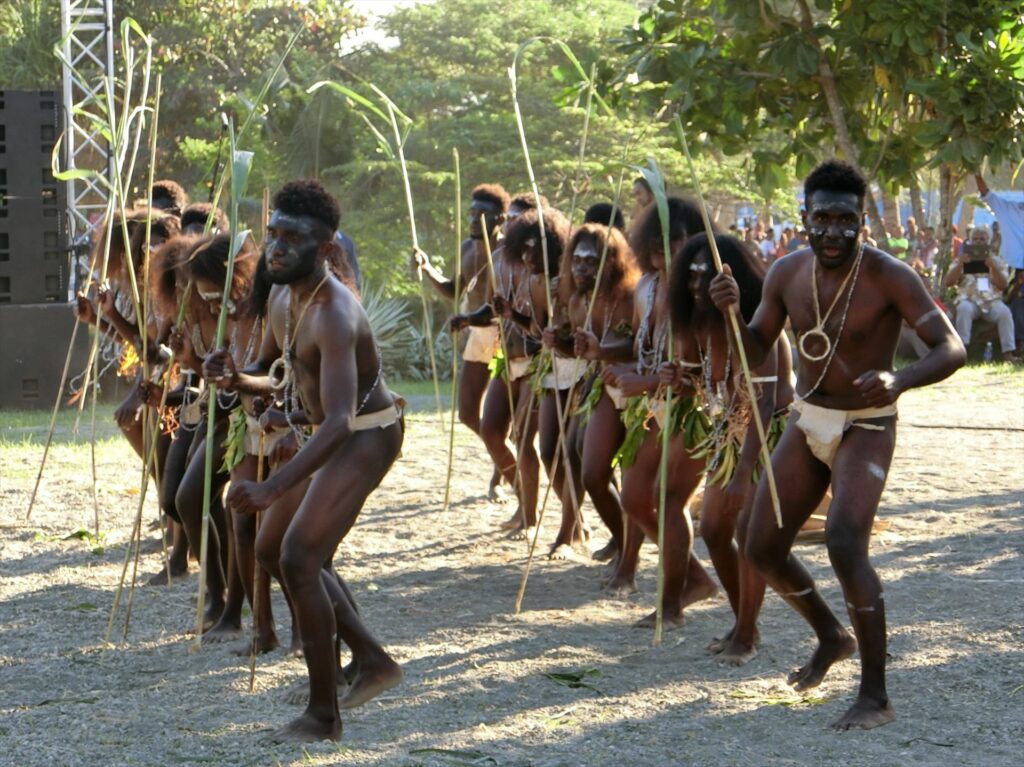
Commercialization of traditional crafts
Commercializing traditional handicrafts as souvenirs not only brings income opportunities to local communities but succeeds declining traditional craft production.
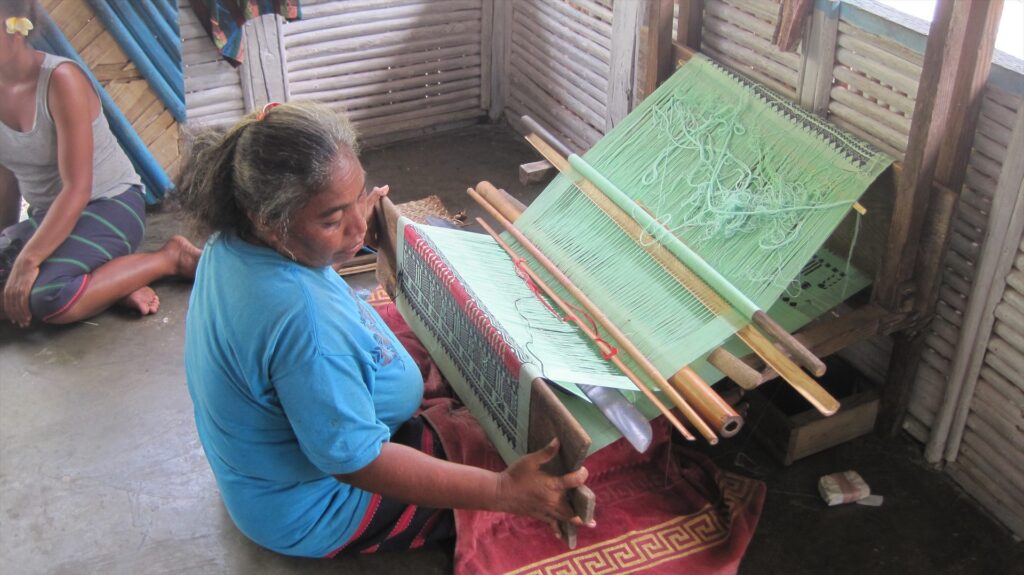
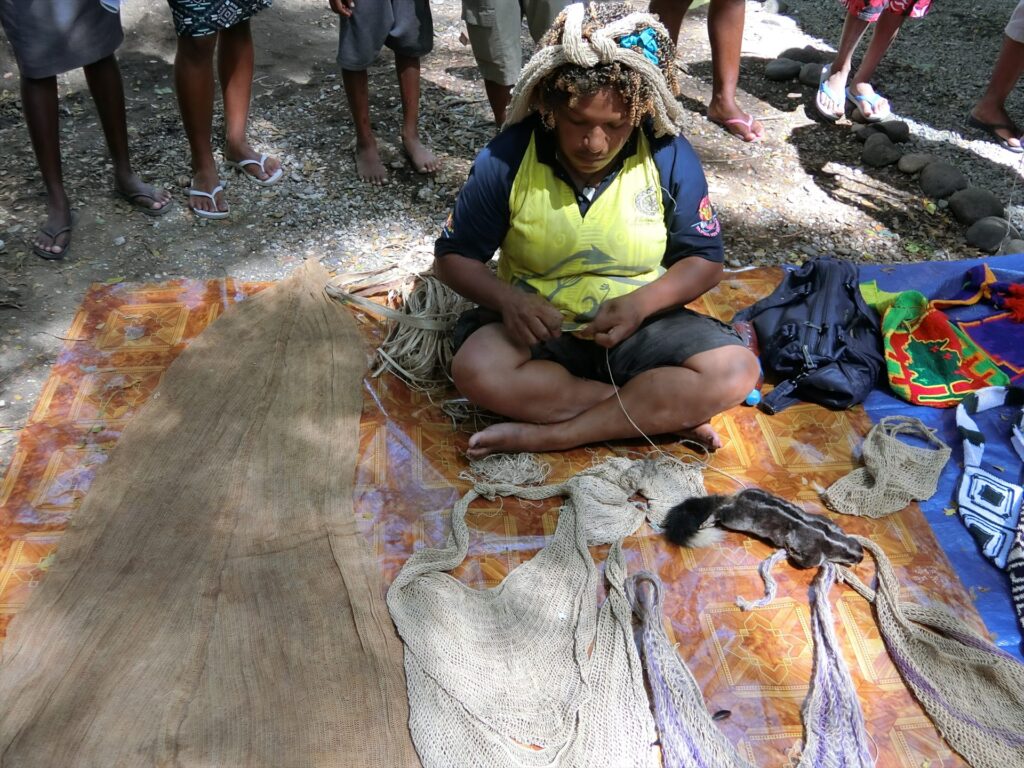
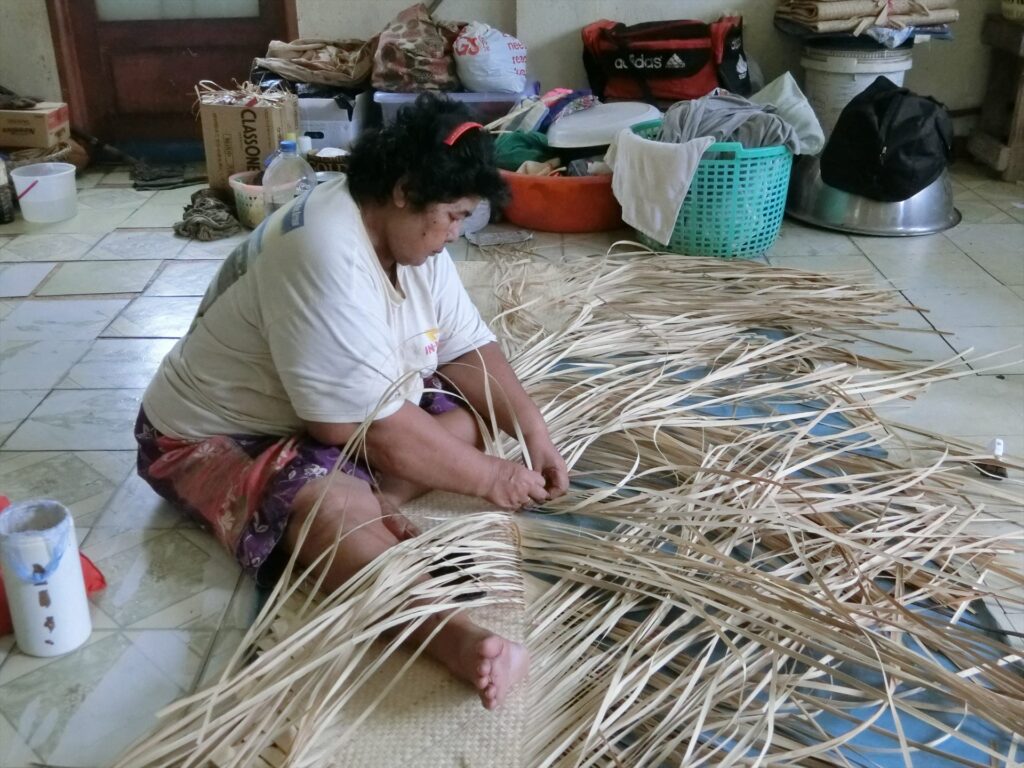
These activities contribute to United Nations’ Sustainable Development Goals (SDGs) Objective 8 “Decent Work and Economic Growth,” particularly Target 4.7 “promote sustainable tourism that creates jobs and promotes local culture and products.”
Promote interaction and friendship with Japan in Oceania
We aim to promote cultural exchange and friendship between Japan and the Pacific nations and raise a “renaissance” (awareness, reflection, or movement) inside those Japanese people, who are involved in supporting or participating in our activities. In addition, we do such activities as public lectures, publications, and video productions to let Japanese people know about their lesser-known neighbors in Oceania.
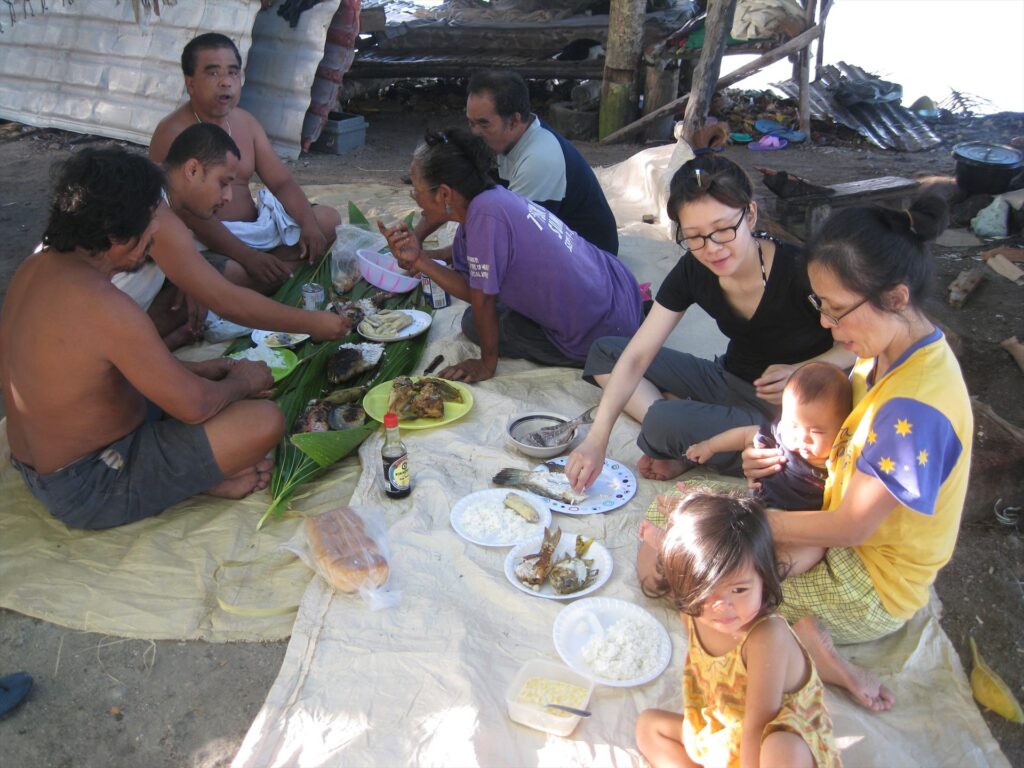
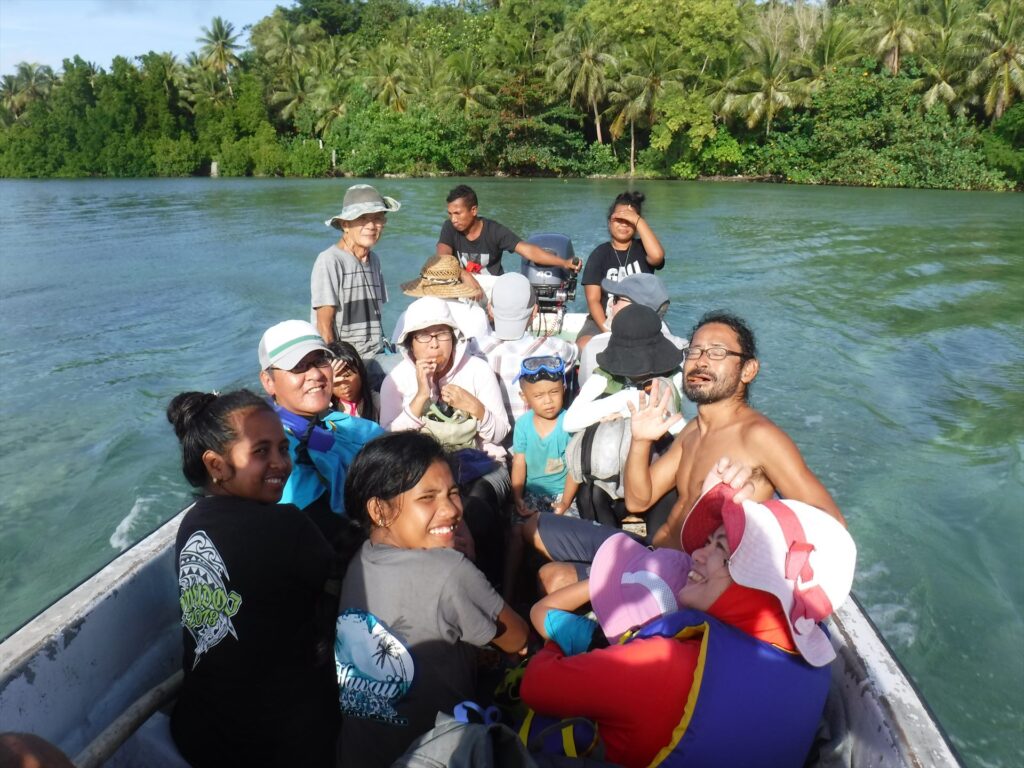
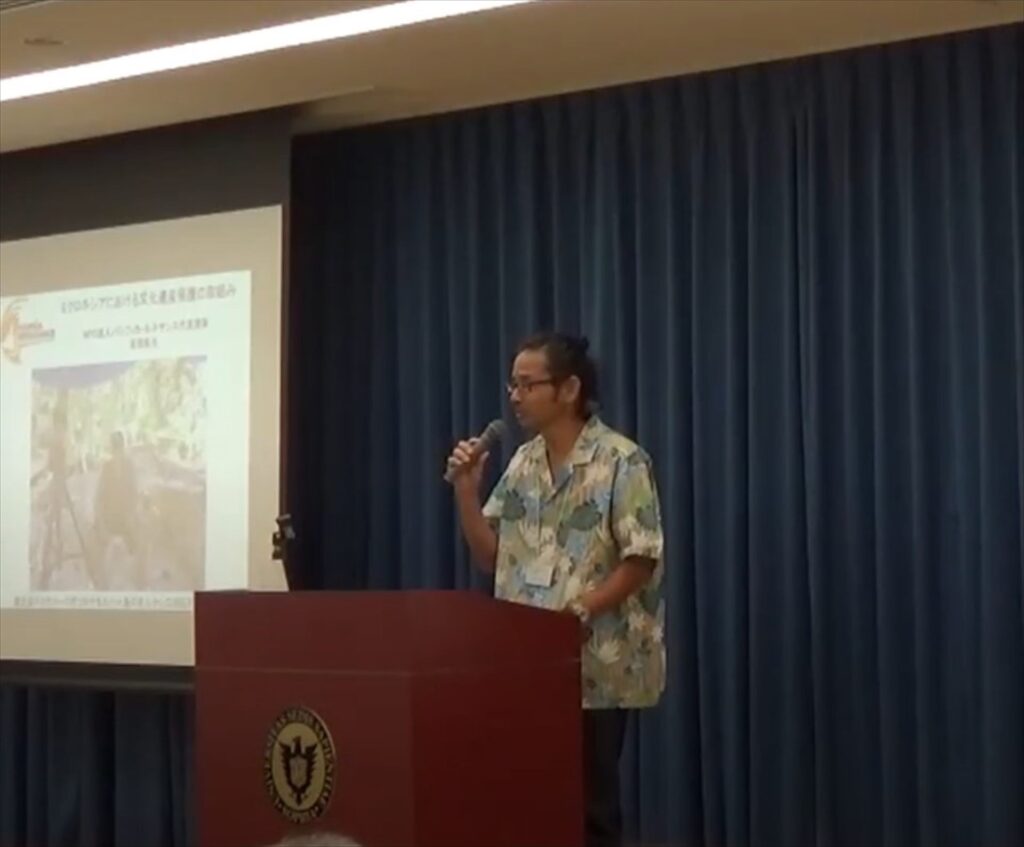
4. Other projects to attain our goals
Selling specialty products of Oceania
Consultancy regarding Oceania
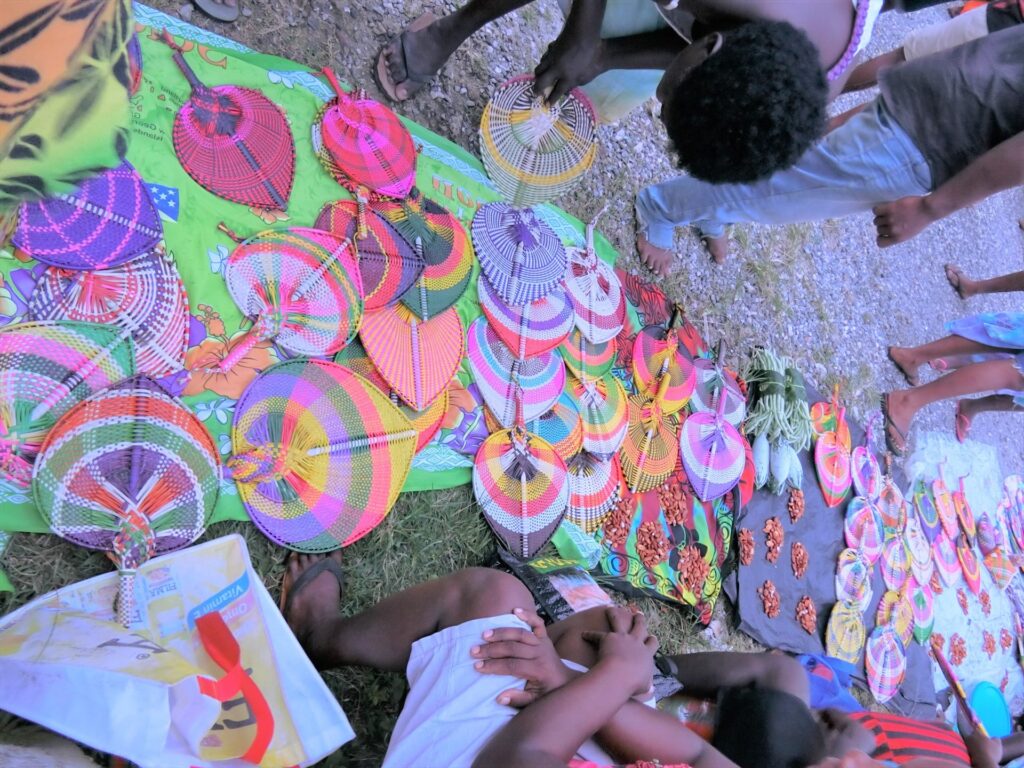

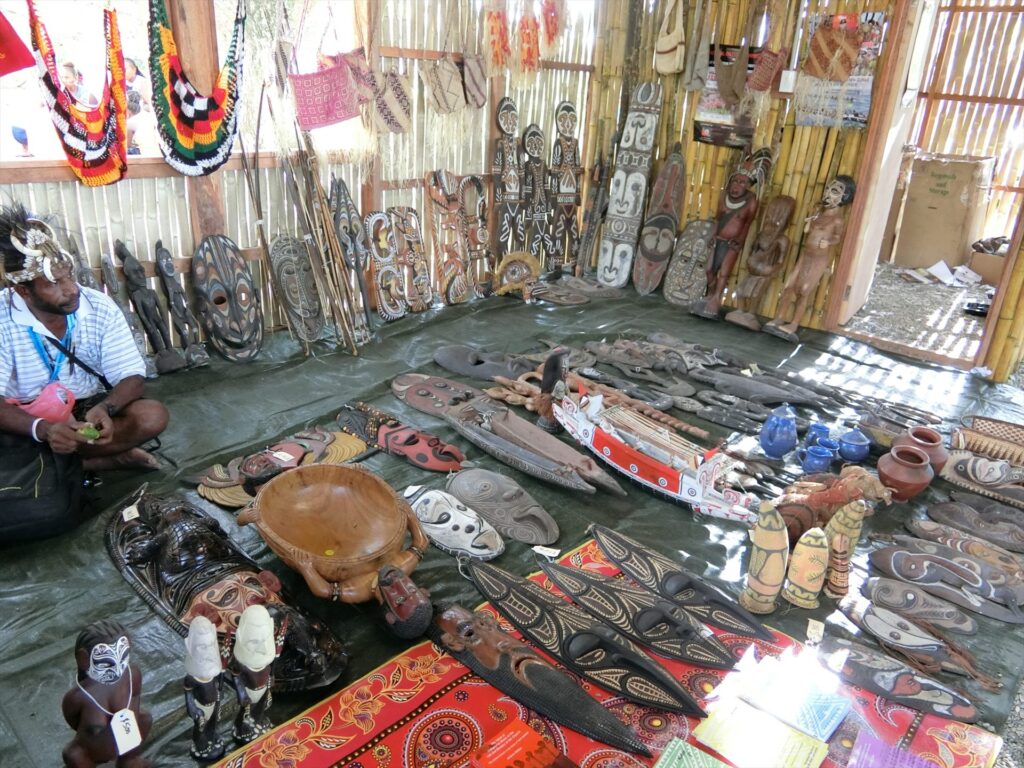
PAST EFFORTS
1990s–2000s
Individual NGO members engaged in their activities.
2013
Feb: Began discussions to form an NPO.
2014
May: Held the Founders’ Meeting and established a Facebook page to begin public relations and educational activities. ![]()
Jun: Held the Organizational Meeting.
Sep: Established a nonprofit organization (NPO) in Japan.
Nov-Jan 2015: As a member of an international collaboration team, Executive Director Nagaoka assisted the FSM National Government in registering Nan Madol as a UNESCO World Heritage site (registered in 2016).
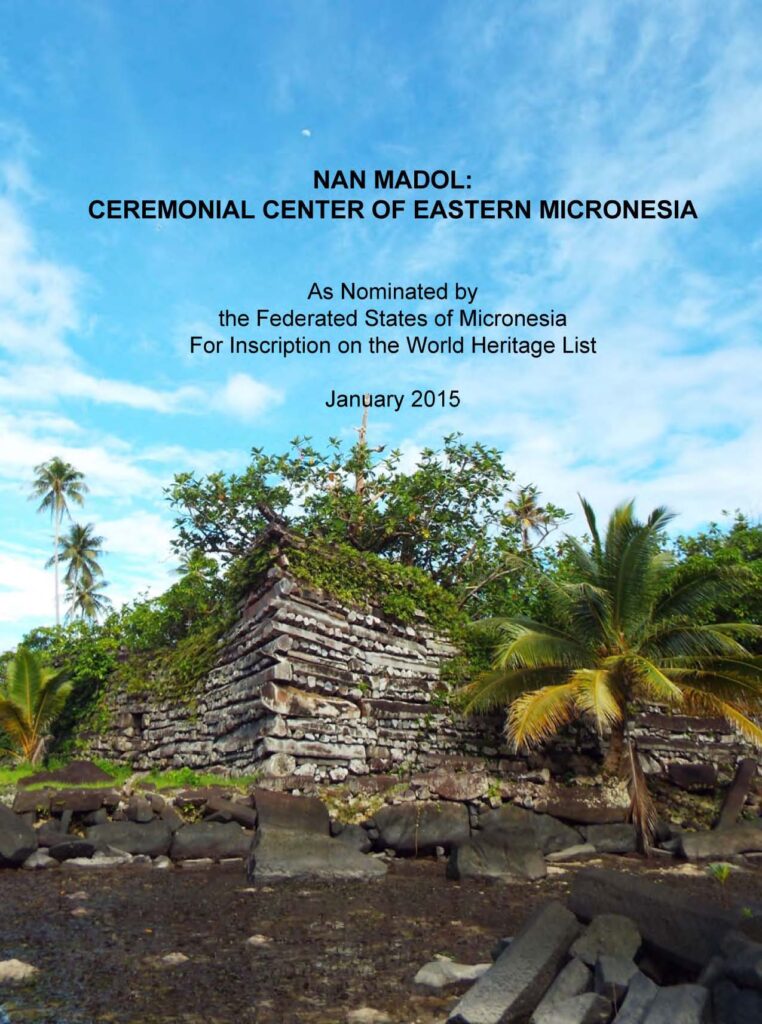
2015
Feb: Held an NGO’s logo design competition to promote Pacific islanders’ creativity.

Feb-Apr: Documented oral traditions from the outer islands of Pohnpei, Micronesia, and visited Sapwuahfik Atoll for the project. 

Mar: Attended the official launching of a UNESCO-affiliated institute ICHCAP’s publication “Traditional Knowledge and Wisdom: Themes from the Pacific Islands” ![]() , to which Executive Director Nagaoka contributed an article “Sailing canoe building on Mwoakilloa Atoll.”
, to which Executive Director Nagaoka contributed an article “Sailing canoe building on Mwoakilloa Atoll.” ![]()

Mar: Created Facebook group “Pasifika Renaissance” as a platform to share info and information and thoughts. ![]()
Apr: Established a YouTube channel. ![]()
May: Conducted an archaeological survey and inventory training program for Yap State Historic Preservation Office staff, Yap, Micronesia, to assist them in preparing the nomination of stone money sites to the World Heritage List. ![]()

May: Executive Director Nagaoka contributed an article “Sailing canoe building on Mwoakilloa Atoll” to a UNESCO-affiliated institution ICHCAP’s quarterly magazine on the intangible cultural heritage of Asia and the Pacific, “ICH Courier: The Intangible Cultural Heritage Courier of Asia and the Pacific.” ![]()
Aug: Decided NGO’s logo by votes on Facebook. The meaning of the logo is: “The canoe, which is navigated by those frigate birds, is traveling through time, from the past to the present, and is taking us to the future. The orange sun (outer arc)/ moon (inner arc) symbolizes the passage of time. The three stars represent Micronesia, Melanesia, and Polynesia in Oceania. As a coconut tree, the most vital tree to the Pacific Islands, was often planted for every newborn, it represents birth, therefore revitalization (“renaissance”) of traditional culture,”

Sept: Executive Director Nagaoka contributed an article “Preserving and Passing down Traditional Cultures and Historical Heritage in Oceania” (in Japanese) to “Nanto Monthly Report” (published by the Nanto Economic Research Institute).
Sept: Honored as a 2015 Top Rated Award by GreatNonprofits, the leading provider of user reviews about nonprofits organizations. ![]()

Sept-Mar 2016: Documented oral traditions from the outer islands of Pohnpei, Micronesia. ![]()

Oct: Executive Director Nagaoka contributed an article “Preserving and revitalizing traditional cultures and historical heritage in the Pacific Islands” to a UNESCO-affiliated institution ICHCAP’s quarterly magazine on the intangible cultural heritage of Asia and the Pacific, “ICH Courier: The Intangible Cultural Heritage Courier of Asia and the Pacific.” ![]()
Nov: Executive Director Nagaoka visited the southern outer islands of Pohnpei State, Sapwuahfik, Oroluk, Nukuoro, and Kapingamarangi atolls, to document oral traditions from elders. ![]()

Nov: Invited public to share their videos of oral traditions on Facebook to promote interested people’s participation in NGO’s activities. This campaign was taken up by “Asia Pacific Report” (news site by the Pacific Media Centre in New Zealand) ![]() and “Evening Post” (news site in New Zealand)
and “Evening Post” (news site in New Zealand) ![]() in an article “Pasifika Renaissance calls for Pacific oral histories on video.”
in an article “Pasifika Renaissance calls for Pacific oral histories on video.”

2016
Feb: Continued to support the Hosei University Exploration Society’s research at a mysterious inland site on Pohnpei, Micronesia (started from 2014). Executive Director Nagaoka contributed an article “Japanese university students researching Pohnpeian chief’s lost village” to a local Micronesian newspaper “The Kaselehlie Press.” 

Feb: Visited the eastern outer islands of Pohnpei State, Pingelap, and Mwoakilloa atolls, to record oral traditions from elders. ![]()

Mar-Feb 2018: Assisted a local NGO, Kousapw Roasdi, in publishing a book on Pohnpeian traditional knowledge, Micronesia.
Apr: Awarded a KDDI Foundation’s grant for oral tradition documentation project in Pohnpei, Micronesia. 
Jul: Published “PasiRena Newsletter” No.1. ![]()
Jul: Nan Madol was inscribed on the World Heritage List, in which process Executive Director Nagaoka assisted the FSM Government as a member of an international collaboration team. ![]()

Jul-: Worked on the Sokehs Ridge Park Development Plan to assist the Pohnpei State Government, Micronesia.

Jul: Supported “Creating stories of Nan Madol” project, which is part of Pacific Resources for Education and Learning’s (PREL) project, Pacific Storytellers Cooperative (Project Director: Mr. Daniel Lin). ![]()
Jul: Executive Director Nagaoka contributed an article “Nan Madol became a World Heritage Site!” (in Japanese) to the KDDI Foundation’s blog, which awarded a grant to us for the Pohnpeian oral tradition documentation project. ![]()
Nov: Provided advice and guidance toward the production of “Nan Madol,” a TV program of TBS Television’s “World Heritage” series (broadcasted on November 20). ![]()
Nov-Jan 2017: Executive Director Nagaoka contributed articles “New World Heritage Nan Madol: 1. What is Nan Madol?”(in Japanese) ![]() and “New World Heritage Nan Madol: 2. Nan Madol in the island history” (in Japanese)
and “New World Heritage Nan Madol: 2. Nan Madol in the island history” (in Japanese)![]() to NGO Association for Micronesian Development’s newsletter “Non-Profit-Organization Association for Micronesian Development News,” to which Nagaoka serves as Advisor.
to NGO Association for Micronesian Development’s newsletter “Non-Profit-Organization Association for Micronesian Development News,” to which Nagaoka serves as Advisor.
Nov-Jun 2017: Documented Pohnpeian oral traditions in collaboration with the Pohnpei State Historic Preservation Office, Micronesia. ![]()

2017
Jan: Our video entry “Festive day on Sapwuahfik Atoll, Micronesia” won the Distinction Prize (third prize) in the 2016 Asia-Pacific Intangible Cultural Heritage Multimedia Contest, held by a UNESCO-affiliated institution, ICHCAP. ![]()
Jan-Feb: Co-sponsored Nan Madol photo exhibitions with the Kansai Gaidai University at Nara and Tokyo, which were visited by totally 250 people. This exhibition was taken up by two articles in “The Yomiuri Shinbun.” ![]()
![]()

Apr: Executive Director Nagaoka contributed an article “Documenting disappearing stories by video camera and publishing videos on the internet“ (in Japanese) ![]() to the KDDI Foundation’s bulletin “KDDI Foundation,” which awarded a grant to us for the Pohnpeian oral tradition documentation project.
to the KDDI Foundation’s bulletin “KDDI Foundation,” which awarded a grant to us for the Pohnpeian oral tradition documentation project.
Apr-Jul: Documented oral traditions from an elder of Namonuito Atoll, an outer island of Chuuk. ![]()

Jun 2015-Apr: Completed sharing 227 videos of oral traditions from Pohnpei and its outer islands on YouTube. 
May: Executive Director Nagaoka contributed an article “Pasifika Renaissance Shares over 200 Narrative Videos of Pohnpei State on YouTube” to a local Micronesian newspaper, “The Kaselehlie Press”.  This article was reproduced in “ICH Courier e-News”40 (UNESCO-affiliated institution ICHCAP’s newsletter on the intangible cultural heritage of Asia and the Pacific)
This article was reproduced in “ICH Courier e-News”40 (UNESCO-affiliated institution ICHCAP’s newsletter on the intangible cultural heritage of Asia and the Pacific) ![]() and was taken up by ”Pacific Islands Report,” an independent research institute in Hawaii, the East-West Center’s news site.
and was taken up by ”Pacific Islands Report,” an independent research institute in Hawaii, the East-West Center’s news site.
Jul: Executive Director Nagaoka gave a presentation “Sustainable Cultural Heritage Protection in Micronesia: Development, Tourism, and Education” (in Japanese) at the 21st Workshop “Endangered Heritage in Paradise: Focusing on Nan Madol in Micronesia,” organized by the Japan Consortium for International Cooperation in Cultural Heritage. ![]()

Nov: Shared videos on the Pohnpeian chiefly canoe (warasap) building documentation, which was recorded by Deputy Executive Director Saito in 1994 during his JOCV volunteer service, on YouTube. ![]()
Nov: Shared videos on the Mwoakilloa sailing canoe building documentation, which was recorded by Executive Director Nagaoka in 1994 during his JOCV volunteer service, on YouTube. ![]()
Dec: Completed the final report “’Report on an Archaeological Survey of Five Malal Complexes, Yap Island, Micronesia,” which resulted from a survey and inventory training program that Executive Director Nagaoka conducted for Yap State Historic Preservation Office staff in 2015 to assist them in preparing the nomination of stone money sites to the World Heritage List. ![]()
2018
Jan: Executive Director Nagaoka made a presentation on the final draft of the Sokehs Ridge Park Development Plan to FSM National and Pohnpei State officials. ![]()

Jan-Jun: Documented Pohnpeian oral traditions in collaboration with the Pohnpei State Historic Preservation Office, Micronesia. ![]()

Feb-Mar: Assisted the preparation of Pohnpei Cultural Day, Micronesia, and created its Facebook page. ![]() Also filmed the event.
Also filmed the event. 

Feb-Jun: Assisted the Pohnpei State Government in preparing a grant request to the Japan Government’s Grant Assistance for Cultural Grassroots Projects Scheme to construct Nan Madol Visitor Center.
Apr: Published “PasiRena Newsletter” No. 2. ![]()
Apr: Executive Director Nagaoka contributed an article “Pohnpei celebrated Cultural Day 2018” to a local Micronesian newspaper “The Kaselehlie Press.” 
Apr: Started a new weekly radio program “Nahlikend En Leng” on Pohnpeian oral traditions in collaboration with the Pohnpei State Historic Preservation Office. ![]()
May: Executive Director Nagaoka and Mr. Jason Barnabas (Assistant Public Educator, the Pohnpei Historic Preservation Office) contributed an article “New radio program ‘Nahlikend En Leng’ started in Pohnpei!” to a local Micronesian newspaper “The Kaselehlie Press.”  This article was reproduced in a Saipan newspaper “The Marianas Variety” and a UNESCO-affiliated institution ICHCAP’s newsletter on the intangible cultural heritage of Asia and the Pacific, “ICH News.”
This article was reproduced in a Saipan newspaper “The Marianas Variety” and a UNESCO-affiliated institution ICHCAP’s newsletter on the intangible cultural heritage of Asia and the Pacific, “ICH News.”
Jun: A NGO in Pohnpei, Kousapw Roasdi’s Director Peterson Sam published a book on Pohnpeian oral tradition, “Pohnpei: Pwuken Kadaudok,” which Executive Director Nagaoka edited.
which Executive Director Nagaoka edited. ![]()

Jul: Executive Director Nagaoka and NGO Kousapw Roasdi Director Peterson Sam contributed an article “Book on Pohnpeian traditional culture has just published!” to a local Micronesian newspaper “The Kaselehlie Press.” 
Jul: Executive Director Nagaoka participated in “Pacific Young ICH Practitioners Network Meeting,” which was organized by a UNESCO-affiliated institution ICHCAP, as a Moderator, the Solomon Islands. ![]()

Jul: Documented performances at the 6th Melanesian Arts and Cultural Festival (MACFEST) in Honiara, the Solomon Islands. ![]()

Dec: Produced an online exhibition “Pohnpeian Ceremonial Yam Feast” on Google Arts & Culture. ![]()

2019
Jan: “Pasifika Living Treasure” campaign, which requests the public to nominate knowledgeable and skillful persons, was launched on Facebook, hoping that this recognition will bring more appreciation to unique living cultural heritage in the Pacific Islands and accelerate succession of such “cool” tradition by young people.

Jan: Executive Director Nagaoka made a presentation (in Japanese) on Micronesian history and culture to JICA volunteers in Micronesia.

Jan-Jun: Documented Pohnpeian oral traditions in collaboration with the Pohnpei State Historic Preservation Office, Micronesia.

Jan: Attended the Grant Contract Signing Ceremony for the Nan Madol Visitor Center Construction Project in Pohnpei, Micronesia, to which Executive Director Nagaoka assisted the Pohnpei State Government in preparing a grant request to the Japan Government’s Grant Assistance for Cultural Grassroots Projects Scheme.
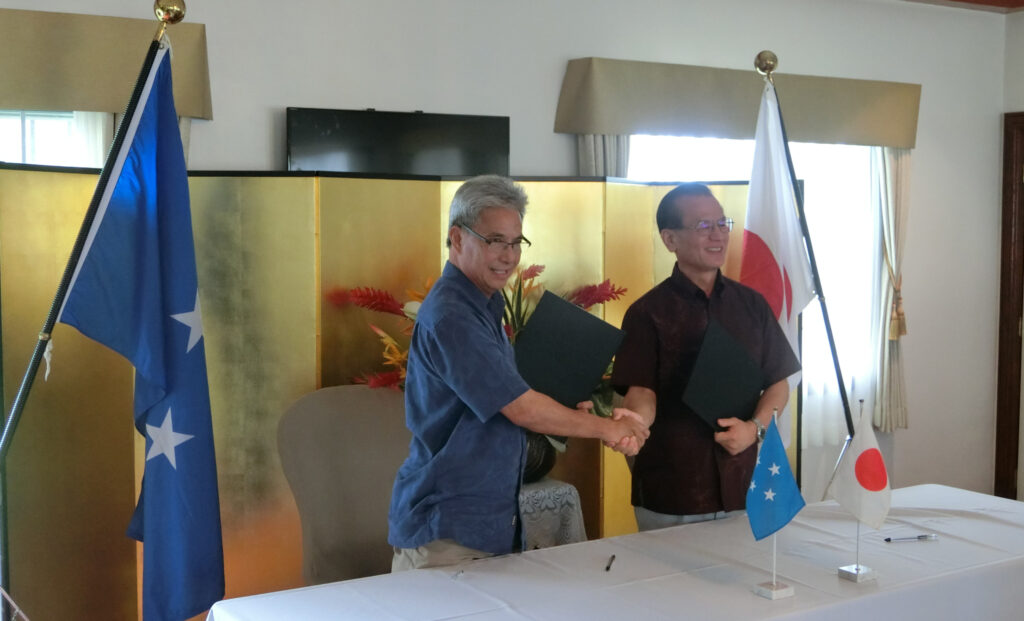
Jan: Executive Director Nagaoka made a presentation “Where did Micronesian come from?” for the Pohnpei Catholic School 3rd graders.

Feb: Funded by the UNESCO Participation Program, began to produce history readers for outer islands of Pohnpei in collaboration with the Pohnpei State Department of Education.
Feb: To promote public awareness of an archaeological investigation on Lenger Island, Pohnpei (Principal Investigator: Dr. Rintaro Ono ), invited the public to participate in the excavations and organized an exhibition of excavated artifacts, where Executive Director Nagaoka made presentations to two elementary school groups.
), invited the public to participate in the excavations and organized an exhibition of excavated artifacts, where Executive Director Nagaoka made presentations to two elementary school groups.

Feb-Mar: Assisted in preparation of Pohnpei Cultural Day. 

Mar: Executive Director Nagaoka, Dr. Ono Rintaro (Tokai University), and Mr. Jason Lebehn (Pohnpei State Historic Preservation Office) contributed an article “New archaeological research project started in Pohnpei” to a local Micronesian newspaper, “The Kaselehlie Press.” 
Apr: Reached 10,000 fans to our Facebook page.

Apr: Executive Director Nagaoka guided the Pohnpei SDA School 6th graders on Sokehs Ridge during their field trip.

May-Jul: Funded by the UNESCO Participation Program, documented a traditional Carolinian navigation course in Yap, Micronesia, to produce educational videos.

May-Jul: Documented Yap outer islands oral traditions on Yap, Micronesia. ![]()

Jul: Filmed a traditional first fruit offering ceremony of breadfruit paste (lihli) in collaboration with the Pohnpei State Historic Preservation Office.![]()

Aug-Sept: To promote public awareness of an archaeological investigation on Lenger Island, Pohnpei (Principal Investigator: Dr. Rintaro Ono ), invited the public to participate in the excavations and organized an exhibition of excavated artifacts, where Executive Director Nagaoka made presentations to 420 people, including 350 high school students.
), invited the public to participate in the excavations and organized an exhibition of excavated artifacts, where Executive Director Nagaoka made presentations to 420 people, including 350 high school students.

Sept: Executive Director Nagaoka made a presentation (in Japanese) on Micronesian history and culture to Ryukyu University students during their training program in Pohnpei.
2020
Jan: Executive Director Nagaoka made presentations “Where did Micronesian come from?” for the Pohnpei Catholic School 7th, 8th, and 10th graders.

Apr: Shared information about NGO’s digital collection to International Council on Archives (ICA) website.
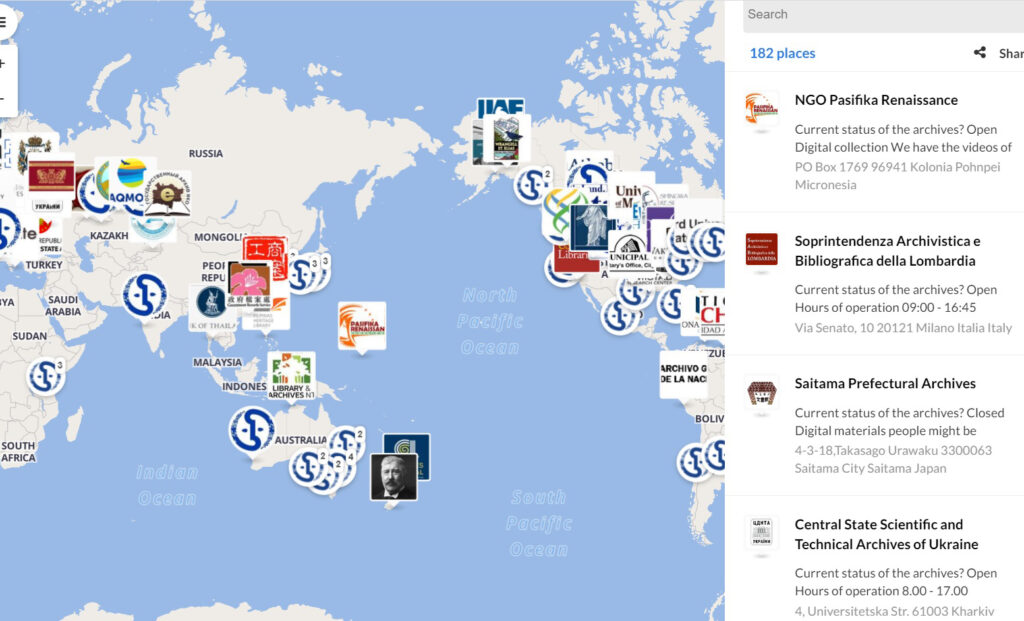
May: Started sharing Mwoakilloa oral tradition recordings, which were recorded by Executive Director Nagaoka and Ms. Barbara Hicks in the early 2000s, on YouTube. ![]()
Jul: Shared the first-ever educational video on traditional Carolinian navigation on YouTube and the project report on Facebook.
and the project report on Facebook. Executive Director Nagaoka contributed an article “First-ever educational videos on traditional Carolinian navigation online now” to a local Micronesian newspaper, “The Kaselehlie Press.”
Executive Director Nagaoka contributed an article “First-ever educational videos on traditional Carolinian navigation online now” to a local Micronesian newspaper, “The Kaselehlie Press.” ![]()

Jul-Nov: Member Shultz Yasaka and Volunteer Conroy Kono created thumbnail images for all videos on YouTube to promote videos.

Nov: Started sharing videos of Yapese intangible cultural heritage recordings on YouTube, which were shared by Yap State Division of Media and Protocol and Historic Preservation Office. ![]()
Nov: Cooperated with the National Library of New Zealand in the Pacific Virtual Museum pilot project as a content partner, in which we shared our 1251 YouTube video on the digital pasifika website. ![]()
2021
Feb: Started using a Japanese multinational conglomerate holding company, Softbank’s fundraising platform, “TsunagaruBokin.” ![]()
Feb: Executive Director Nagaoka and Professor Peter Sheppard (University of Auckland) contributed an article “New information from an old stone adze found in Pohnpei” to a local Micronesian newspaper, “The Kaselehlie Press” to introduce their recent academic article. ![]()
Feb: Executive Director Nagaoka was appointed as a member of Technical Assistance Committee by FSM National Historic Preservation Office to provide them with technical advice and guidance.
May: Began to use recycling item donation programs, BOOKOFF Group Holdings’“Kimochito.” ![]() and TM Communication Service Ltd.’s “Otakara-Aid”.
and TM Communication Service Ltd.’s “Otakara-Aid”. ![]()
Jul: Began to use a donation platform Syncable.
Jul-Oct: Translated a Japanese colonial period document on the Marshallese ethnography into English following a Norwegian researcher’s request.
![]()
Oct: Began to use NPO Donation Type Vending Machine Spread Association’ donation type vending machine program. 
Oct: Published three student readers of the history of Mwoakilloa![]() , Nukuoro
, Nukuoro![]() , and Kapingamarangi Atolls
, and Kapingamarangi Atolls![]() , which were funded by UNESCO’s Participation Programme and were produced in collaboration with the Pohnpei State Department of Education.
, which were funded by UNESCO’s Participation Programme and were produced in collaboration with the Pohnpei State Department of Education.
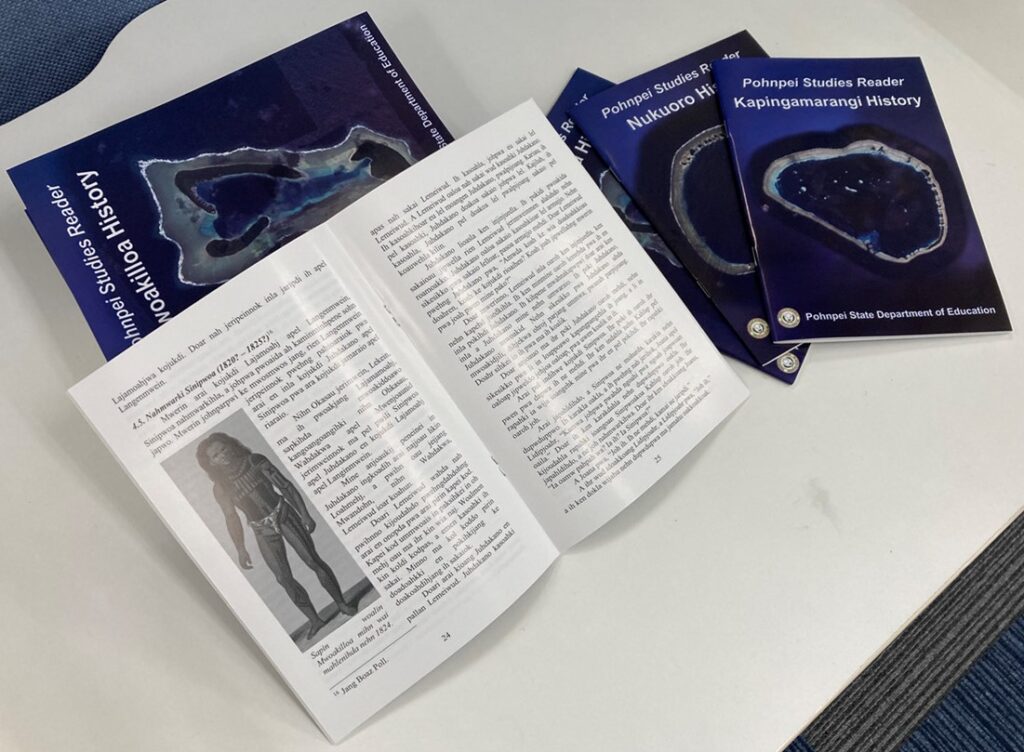
2022
Feb: Shared the English translation of a Japanese colonial period document on the Marshallese ethnography, which was translated following a Norwegian researcher’s request.![]()
Mar: Shared the project report on Pohnpei Studies History Reader production on Facebook.![]()
People’s Voices on PasiRena’s Work
These are comments on our activities given to GreatNonprofits, the leading provider of user reviews about nonprofits organizations in September 2015. ![]() Based on their ratings, we were honored as a 2015 Top Rated Award.
Based on their ratings, we were honored as a 2015 Top Rated Award.
Keeping alive the varied history of Micronesia. This is a world-class organization doing a phenomenal job of documenting the history of Pohnpei, the CNMI, Yap, Chuuk, the Marshalls, and others. This is no second-rate effort. The researcher spends months at a time with these communities and parses out important historical and cultural information. I check in almost daily on his efforts!
Saipanese man
Pasifika Renaissance is definitely one of the best and most interesting sites I have joined and contributed to. It fits right in with my lifelong interest in the languages and cultures in Micronesia and Polynesia. The key to its appeal is its director Dr. Takuya Nagaoka, who combines a deep and extensive knowledge of the Pacific with a tolerance for a wide range of opinions and levels of knowledge and experience, from novices to experts in various fields. Members include not only interested outsiders looking in but also people from many Pacific Island cultures seeking to learn about and preserve their own priceless and sometimes endangered heritages.
Some other knowledge-sharing sites I have been to seemed to be oriented more toward pontificating, where revealing that one did not already know all the answers was frowned upon, as if doing so would compromise the reputation of the site. That did not fit with my image of what a social media site should be, for that discourages interaction and communication. With my own students, I sometimes pose questions already knowing the answer in order to generate interchange and dialog and to see what new angles might come up. Other times, I really do not know and like to switch roles with the students and have them educate me through verbal communication. Sites and organizations that discourage this have little interest for me.
When Dr. Nagaoka invited me to Pasifika Renaissance, I found the way he ran it very refreshing. A large part of that for me is that while he is a full-on academic with expertise in his own field of archaeology, he is also very easy-going and down-to-earth and easy to communicate with, coming partly out of his own personality but also from his among-the-people, on-the-ground, on Pohnpei with the Japan Overseas Cooperation Volunteers (JOCV), which includes fluency in the language. His expertise extends far beyond archaeology, into languages and linguistics, anthropology, and history. In areas where I am not that sure of myself, it is very easy to ask Dr. Nagaoka and other participants to educate me with their knowledge and experience. They have shared links to many documents and sources that I had not known about.
The use of “Renaissance” in the name of the site is also fitting because is director/administrator is something of a Renaissance man himself.
American man
The best place to go to if you are curious or to rediscover your roots… Dr. Takuya is very passionate about his work and I consider him to be the ultimate walking Micronesian thesaurus. A million thank you, Takuya and Pasifika Renaissance for enlightening us. Keep them coming. 🙂
Pohnpeian woman
With so many stories and voices in Oceania, Pasifika Renaissance is a great source that reports and showcases Pacific happenings. Dr. Takuya Nagaoka has a huge passion for the people and cultures of the Pacific and his page presents a great balance of socio-cultural information from both Near and Remote Oceania. As a lecturer in Anthropology 1130 People and Cultures of the Pacific, I suggest for my students on Facebook to like and join Pasifika Renaissance, as I know they will be updated to and motivated by the cultures of the Pacific. Excellent Nonprofit! Please continue your work, highly valuable.
Pasifika Renaissance is “the” place to see what’s going on, and what has gone on, in terms of research into the history, culture, and society of the Pacific Islands, and its connection with Asia. Check it out, ask questions and get involved in what’s happening in the greatest expanse of water on our planet and how humans have lived there.
American man
I have seen Pasifika Renaissance involve and inspire Micronesians to explore and celebrate their history and heritage in meaningful ways. It is encouraging to see the interest and passion this group is sparking. Dr. Nagaoka has a genuine and long-standing love for the region and many, many personal and professional relationships here.
American woman
Often the mission statement of an NGO is merely that, just a statement. This is not the case with Pasifika Renaissance. It is refreshing to see the efforts of Dr. Takuya Nagaoka, and a cadre of volunteers and contributors, come to fruition. To put it simply, this is a really good and worthwhile organization. It is making an extremely positive impact on Oceania by providing invaluable historical and cultural information to its populace and the public at large. Pasifika Renaissance is a very fitting moniker for this NGO that deserves much support.
Mwoakillese woman
Pasifika Renaissance is a relatively new NGO that is dedicated to collecting and disseminating knowledge about Oceania to Pacific Islander communities. The organization’s web presence is already a wonderful resource, and with some exciting new projects in the works, a wealth of expertise to draw from, and with Takuya’s able leadership this is an NGO to watch!
American man
Pasifika Renaissance is a relatively new NGO created to support the government(s) and provide for workers in the field and for sharing oral tradition. It also shares and instills both new and past information of the many countries in Oceania and recruiting a broad and diverse range of supporters as well as users to interact and offer many topics and related links that director, Dr. Takuya Nagaoka posted and/or shared. As a retired educator myself, I find it extremely useful for our educational agencies in the nation and I further recommend it to any new user or visitor. It is an NGO that deserves public supports.
Pohnpeian man
Pasifika Renaissance is an incredible nonprofit doing tremendous work to collect and disseminate the valuable cultural knowledge and history of Pacific Islanders. Since its creation, the website has continuously provided new bits of once unattainable information to all who visit or subscribe to the page. It seems that everyday new knowledge is provided and questions answered. Most importantly, Pasifika Renaissance returns to Islanders the research and cultural resources that often have been out of reach to them via its public-friendly media format that constantly provides expert feedback to those who wish to better understand their own heritage. It is a brilliant idea that is being expertly managed and realized.
American man
Pasifika Renaissance is an awesome place for learning and sharing history and culture. My kids are young explorers of history in the Pacific and Pasifika Renaissance helps them understand history and culture much faster. It’s a wonderful place to learn,
Marshallese woman
Having lived in the Federated States of Micronesia, and having experienced firsthand the richness and diversity of its culture, I am impressed by the ability of this group to address so many issues. The articles and scholarly texts that Pasifika Renaissance makes available to any interested person are fascinating and informative. The contributors, especially Dr. Nagaoka, are quick to respond to users’ questions, often stimulating spontaneous, in-depth discussions, where more times than not, additional valuable information is revealed.
American woman
These are some comments to our activities given to our Facebook page:
I’m really ignorant of these things and I’m very eager to learn about my Austronesian heritage. When I move back to Palau I want to learn, propagate, and produce knowledge.
Palauan woman
I just wanted to thank your organization from the bottom of my heart. It is good to see that people care about our culture and are trying to preserve it before it completely disappears.
Pohnpeianwoman
Your page is awesome!!!! 10 Star!!! Brings back what we are losing little by little each year; culture, tradition, etc… God bless us all.
Marshallese man
Pasifika Renaissance (initiated and driven by Takuya Nagaoka and staff) continues to collaborate with communities across Micronesia. This is an excellent archive and linkage for researchers, government agencies, activists, and interested community members. Keep up the great work! Micronesian communities empowering themselves and future generations! We are ALL TOGETHER…. 🙂
Palauan man
So grateful for your help in keeping our culture survive the effects of modernization on the islands.
Pohnpeian woman
It is such an honor and pleasure to finally have someone document our island history and legends of Sapwuahfik… Thank you for taking the time to visit our small little island and for this meaningful project you’re doing… It means so much to me…
Sapwuahfik woman
Very essential at this time when our true cultures are eroding. Thanks for establishing the organization.
Solomon Islands man
Your work is outstanding, and is bringing great joy and knowledge to me and many friends in Pohnpei and other islands in the Pacific.
Pohnpeian man
We appreciate your efforts in helping us better understand our own culture. Thank you from the deepest part of our hearts. : )
Mwoakillese woman
I love this page. It is in line with one of the most important things in my life. To discover my past so that I can find my future. All in an effort to serve the future of humanity. Easier said than done.
Palauan woman
Pasifika Renaissance is one great opportunity for one to look at the past and admire how, as a people, we have come to be where are right now…
Pohnpeian man
“Deabodonu laumalie,” literally means “thank you very much,” for your time and effort which made all things valuable images available… Congratulations to all your accomplishments and more to come…>Senator Lekka, Nukuoro slides
Nukuoroan woman
Thank you, Pasifika Renaissance! We truly appreciate your work and effort in sharing the values of the Pasifika cultures and traditions! The Japanese culture is also embedded in the Micronesian culture as well… My grandparents on both sides spoke fluent Japanese (they were under the Japanese regime before WW2. Thank you very much and hope your work is shared all over the world!!! Peace!
Pohnpeian woman
Many thanks for making me aware of Pasifika Renaissance. What a wonderful, necessary, endeavor to keep the traditional Oceanic culture alive, a culture in which the canoe is at the core of it.
Hawaiian man
How true and concerning what you’d highlighted in your article, Takuya Nagaoka!
Solomon Islands manWhat you have shared is so true for the rest of the island nations and it would be great if this work could extend throughout. However, I know it’s hard instantly, but I do hope you can – with good long-term sustainable support – eventually. Keep up the great work and I look forward to seeing more from your small but very important efforts.
We have been following and admiring your work and goals. Let us know if you see an opportunity for us to collaborate with you on any projects or studies. Keep up the great work! >reply to my introduction on their timeline
NGO in Yap
Thank you for your important project and work of reviving our Pacific heritage and preserving what’s left of our island culture and tradition. Part of our vision is to ensure that our kids are not only doing well with their readings, Math, and science but are also enriched by their Pacific Island values, traditions, and culture.
Micronesian NGO in Hawaii
Stumbled upon this page, and started reading some of the posts. Very interesting. Wished they could’ve offered more of these interesting facts back when I was in grade school. Oftentimes I’d wonder…”Who were the first settlers to set foot on Pohnpei?” Spent most of my life abroad. Whatever history lesson I was taught, was about America. I know little about my homeland, so for me to have come across this, is absolutely amazing, and exciting at the same time. Incredible work.
Pohnpeian woman
Thanks for this important work you are doing… Keep up the great work! I hope your work extends to Palau too. ありがとう Arigatou.
Palauan woman
This is a highly informative page that has provided a great deal on the history of our island and outer islands. I strongly recommend it to those who love our history…
Pohnpeian man
Am amazed by your group’s work, bringing back culture and history for at least our generations and the next to read about. Congratulations on the good work and keep it up.
Papua New Guinean man
Thank you for your work in preserving our historical heritage. Your work is important not only to the current generation but also to the future ones.
Pingelapese woman




